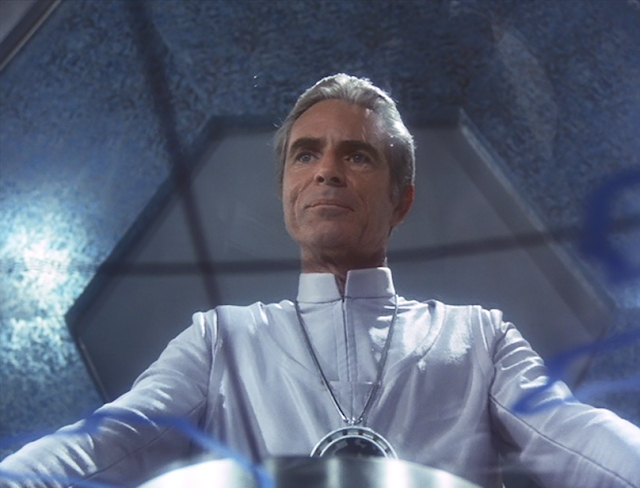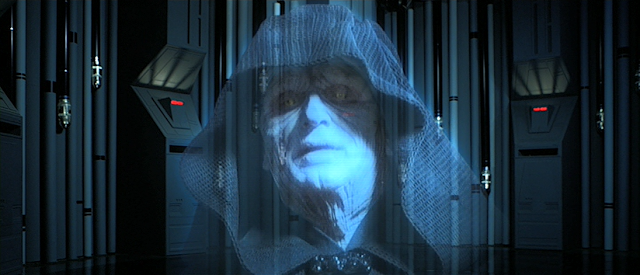The 21st was the 40th anniversary of the release of
The Empire Strikes Back.
According to IMDb, however, the premier was on the 17th. I watched my DVD copy from 2013 (the special edition) on the 17th, and then I watched my VHS copy from 1995 on the 21st. I don't think "non-special edition" copies are even available anymore, and/so I thought it would be interesting to write a post about some of the differences. This isn't meant to be an exhaustive list; these are just things I noticed as I watched it.
In the special edition, while Luke is hanging from the ceiling of the wampa's cave, there are cut away shots to the wampa eating Luke's tauntaun. In the original, there are just noises of the wampa's growling and of the tauntaun's being strangled and a quick shot of the wampa walking.
After Luke's time recovering in the bacta tank, C-3PO says to him, "Master Luke, sir, it's so good to see you fully functional again. R2 expresses his relief also." In the special edition, Luke replies, "Thanks, 3PO" but he doesn't say anything in the original.
Shortly before the
Millennium Falcon enters the "cave" in the asteroid, C-3PO says, "Oh, this is suicide." In the original version, that's his only comment, but in the special edition, he follows it with "There's nowhere to go."
Vader's conversation with the Emperor contains some of the most notable differences between the two versions. Here's the original version:
Vader: What is thy bidding, my master?
Emperor: There is a great disturbance in the Force.
Vader: I have felt it.
Emperor: We have a new enemy: Luke Skywalker.
Vader: Yes, my master.
Emperor: He could destroy us.
Vader: He's just a boy. Obi-Wan can no longer help him.
Emperor: The Force is strong with him. The son of Skywalker must not become a Jedi.
Vader: If he could be turned, he would become a powerful ally.
Emperor: Yes, yes, he would be a great asset. Can it be done?
Vader: He will join us or die, master.
And the original Emperor (with VHS quality and aspect ratio):
Here's the version from the special edition:
Vader: What is thy bidding, my master?
Emperor: There is a great disturbance in the Force.
Vader: I have felt it.
Emperor: We have a new enemy. The young rebel who destroyed the Death Star. I have no doubt this boy is the offspring of Anakin Skywalker.
Vader: How is that possible?
Emperor: Search your feelings, Lord Vader; you will know it to be true. He could destroy us.
Vader: He's just a boy. Obi-Wan can no longer help him.
Emperor: The Force is strong with him. The son of Skywalker must not become a Jedi.
Vader: If he could be turned, he would become a powerful ally.
Emperor: Yes, he would be a great asset. Can it be done?
Vader: He will join us or die, master.
In the special edition, there are new shots of Ian McDiarmid as the Emperor:
It seems that Temuera Morrison, who played Jango Fett and the clone troopers in
Attack of the Clones and
Revenge of the Sith, similarly dubbed over new recordings of Boba Fett's lines. Morrison isn't listed in the credits for the special edition (nor is McDiarmid), so I'm not positive it's him, but Fett's voice certainly is different.
There are various sequences in Cloud City that have been expanded. The
Millennium Falcon's landing has new shots, and there's a completely new sequence in which a cloud car flies through the city. This eventually transitions back into the original shot of the cloud car flying past the window where Leia is standing. There are also some shots where colored panels have been replaced with new digital backgrounds. One of these alterations actually results in a continuity error. In the scene where Lando is talking about his facility "like a businessman, a responsible leader," there are colored panels at the end of the hallway:
In the special edition, these have been replaced with a view of the city:
In the next shot, Lando and Han pause at the end of the hallway, but instead of the view of the city, the colored panels are behind them:
The special edition changed one shot but not the other.
One of the oddest things I noticed is that one of Vader's grunts in his lightsaber battle with Luke is copied and re-used. After Vader's line "Impressive, most impressive," Luke directs exhaust from a recently cut hose at him. His grunt is a solid
UNG! A few shots later, Luke manages to knock Vader off of the carbon freezing platform. In the special edition, this
UNG! is re-used, but in the original, Vader lets out a guttural and raspy
AAH!
After Leia convinces Lando and Chewbacca to go back to Cloud City to rescue Luke, there's a quick shot of Vader, an imperial officer, and some stormtroopers in which - in the original version - Vader says simply, "Bring my shuttle." In the special edition, he says, "Alert my Star Destroyer to prepare for my arrival."
I also noticed that in the original version, some of the TIE fighters' lasers are either blue (in the asteroid field) or white (while chasing the
Millennium Falcon out of Cloud City), while in the special edition, they're all green. And a very minor point: in the original release, Obi-Wan is written as "Obi-wan" in the credits.














